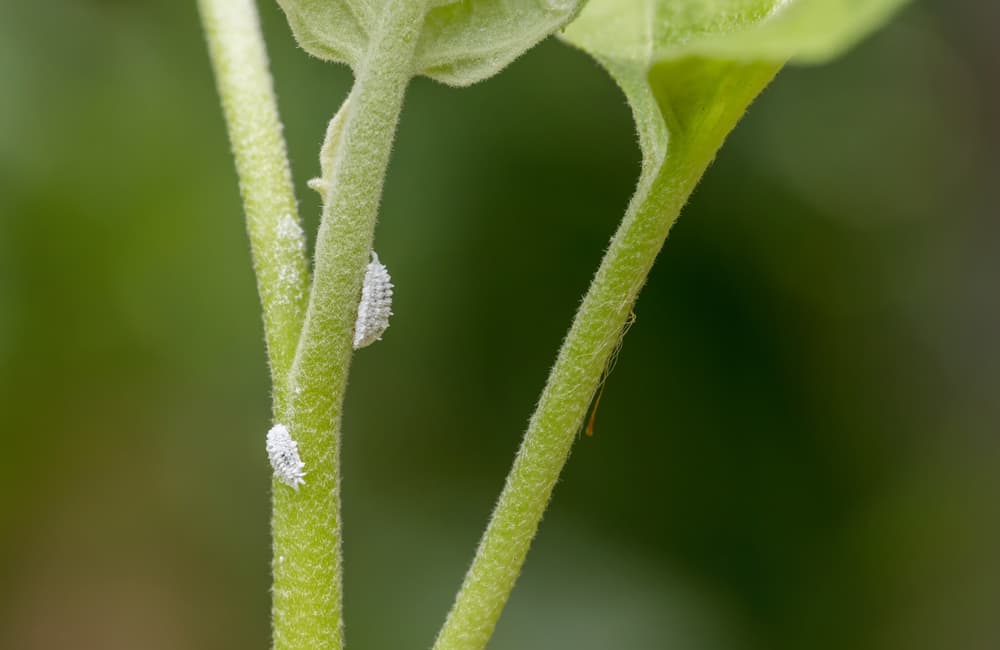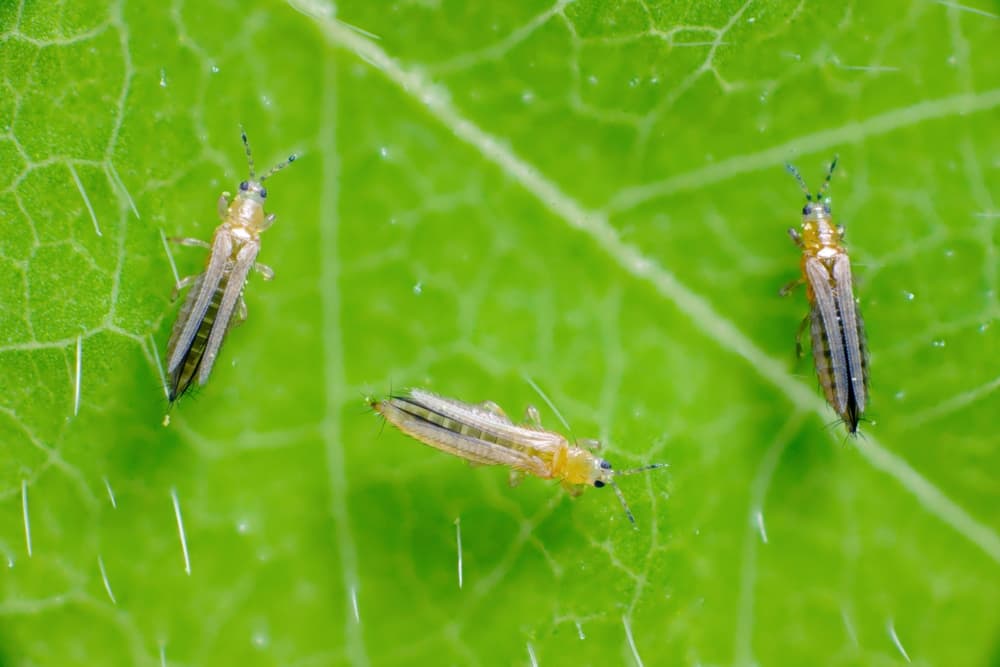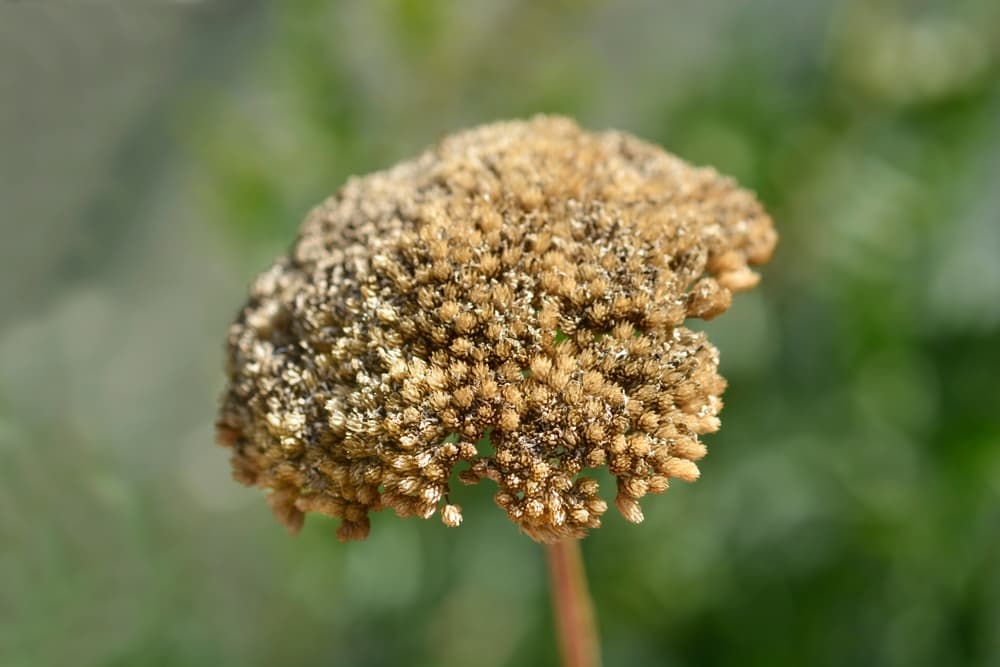PERENNIALS > ACHILLEA
Chris is a gardening writer and nature enthusiast. He graduated from Oxford Brookes University in 2022 with an MA in Psychology. Chris works with the Leeds Green Action Society, helping their food cooperative by growing various fruit and vegetables on their two allotments in Hyde Park, Leeds.
Reviewed By COLIN SKELLY

Colin is a Horticulturist and Horticultural Consultant with experience in a range of practical and managerial roles across heritage, commercial and public horticulture. He holds the Royal Horticultural Society’s Master of Horticulture award and has a particular interest in horticultural ecology and naturalistic planting for habitat and climate resilience.
IN THIS GUIDE
ACHILLEA GUIDES
Achillea plants (AKA ‘Yarrows’) are perennials that have a distinctive look and are very popular with gardeners throughout the UK due to their hardiness and unique beauty.
Considered part of the daisy family – yarrows have a variety of colourful flowers and lush foliage.1Achillea millefolium. (n.d.). North Carolina Plant Toolbox. Retrieved March 9, 2023, from https://plants.ces.ncsu.edu/plants/achillea-millefolium/
Many growers have a fondness for yarrows since they are quite easy to grow and look after and look great when combined with other plants.
If you want to grow yarrows, either in your garden or in pots, then you should find the information below incredibly useful.
Overview
| Botanical Name | Achillea millefolium |
| Common Name(s) | Yarrow |
| Plant Type | Perennial Flower |
| Native Area | Europe and Western Asia |
| Hardiness Rating | H7 |
| Foliage | Herbaceous toothed leaves |
| Flowers | Small daisy-like flowers in white, pink etc. – grouped in flat-headed umbels |
| When To Sow | March, April, May |
| Flowering Months | June, July, August |
Sunlight
Preferred
Full Sun
Exposure
Exposed or Sheltered
Size
Height
0.1 – 0.5M
Spread
0.1 – 0.5M
Bloom Time
June – August
Soil
Preferred
Most Soil Types
Moisture
Moist but well drained
pH
Any
Achillea millefolium, or yarrows, are part of the Asteraceae family and are native to the Northern Hemisphere, including the UK, China and the US.2Achillea L. (n.d.). Kew Royal Botanic Gardens. Retrieved March 28, 2023, from https://powo.science.kew.org/taxon/60436826-2
Today, they’re grown all around the world for their beauty.
A. millefolium is the most common type of yarrow plant and has small white, pink-tinged flowers and grows natively throughout Europe.3Common Yarrow (Achillea millefolium). (n.d.). iNaturalist. Retrieved March 9, 2023, from https://www.inaturalist.org/taxa/52821-Achillea-millefolium
How To Grow Yarrow
Container Growing
Growing yarrows in containers is quite simple, whether you choose to buy established plants, or grow them yourself from seeds.

Growing from seed is the cheaper option of the two, and since Achillea germinates very quickly, you don’t need to wait too long to see them flourishing.
Achillea does best with exposure to full sunlight, so it’s best to place them in a sunny spot – they can still do well in partial shade too, however.
Always make sure you use containers that are big enough to accommodate your plants as they grow.
In Flowerbeds
If you want to grow yarrow outdoors in a flowerbed, then you have a couple of choices.
You can either acquire already established plants and replant them; or use seed or a plant that you’ve grown in a container.

If you’re sowing from seed, then the best time to do this would be during the spring or early summer.
This will give them time to get established without the need to worry about frost damage or the soil being too saturated.
When picking a spot to plant them, you should opt for a position that gets plenty of direct sunlight.
This will ensure they flower well and are less susceptible to certain fungal diseases.
Preferred Soil & Watering
Achillea are not difficult at all when it comes to their water and soil requirements.
Generally, they can do very well, even in dry conditions.
This means you won’t usually need to water them other than during particularly long dry spells.

As for soil requirements – yarrow will do well in most types of soil, even heavy clay soil.
Ideally your soil would be light and open, but if not, your plants should still be ok.
The main thing to be aware of is that if you’re planting in soil that’s not optimal, then you should make sure you avoid planting them later in the year so there’s no risk of frost damage or the soil being waterlogged while they’re getting established.
Common Problems
Yarrows are generally problem-free, provided they’re properly cared for.
Still, there are certain diseases and pests that can cause issues.
Below are some of the most common problems as well as how to deal with them –
Rust
Rust is a general term for a number of fungal diseases that cause rust-coloured spots to appear on the leaves of infected plants.
To prevent rust, you should ensure good air circulation and avoid getting water on leaves.

If you notice any plants that are badly infected, then you should dig them up and destroy them to prevent it from spreading.
Powdery Mildew
Powdery mildew is a fungal disease that affects many different types of plants.
When infected, the leaves of the plant will have a coat of white mildew on top of them that’s not dissimilar in appearance to powder.
In order to avoid powdery mildew becoming an issue, you should take care when watering plants to ensure that water doesn’t splash up onto the leaves.
Adding a layer of mulch is a good way to avoid this – you should also space plants out enough to provide good air circulation.
Mealybugs
Mealybugs are very small insects that leave behind a white powder on the branches and leaves of plants they infest.
They extract sap from the leaves, which results in poor growth.
The excretion of honeydew also causes mould – as well as attracting ants.

If you notice mealybugs on your plants, then you can get rid of them by either washing them off the surface using water, or, by encouraging the presence of predatorial insects, such as wasps and ladybirds.
Aphids
In addition to feeding on the underside of leaves, aphids also leave behind a residue that can attract ants, causing even more damage.
Thankfully, they are quite easy to get rid of.
If you notice them on your plants, then a few blasts of water or soapy water should be enough to remove them (if only for a little while).
Spider Mites
Spider mites are another pest that can affect yarrow.
Despite their tiny size, they can still cause a lot of damage to plants.
They multiply very quickly and can damage the foliage of plants considerably.
You can usually spot spider mites from the webbing they leave behind.
If you notice them on your plants, then blasting them with water should do the trick.
Thrips
Thrips are very small insects that attack different parts of plants they infest, including the stem, leaves and petals.

You can usually spot plants that are infested with thrips by the leaves changing colour, or having a discoloured or silvery appearance to them.
You can get rid of thrips by using soapy water.
It’s also recommended that you remove any plants that are seriously affected by them to prevent spreading.
FAQs
Can You Grow Yarrow In Pots?
Yes. Yarrows are ideal for growing in containers due to them being extremely hardy and perennial.
Does Yarrow Spread?
Achillea will usually spread in the wild, but it’s quite easy to keep on top of it when planting in your garden.
Certain species are more aggressive and do self-seed readily so bear this in mind when buying yarrow plants.
Deadheading in autumn can help prevent the spread of seeds in your garden.

How Tall Does Yarrow Grow?
The majority of yarrow plants grow to be between 1.5-4 feet tall.
Is Yarrow A Perennial?
Yes, yarrow are perennials, so you’ll be able to enjoy them for many years after first planting them.
When Should I Plant Yarrow?
The best time to plant yarrow would be in the late spring or early summer.
Planting at this time will ensure they’re not at any risk of frost damage and they’ll benefit from receiving plenty of sunlight while they become established.
Are Yarrows Suitable For Indoor Arrangements?
Some varieties of yarrow are better than others for indoor vase arrangements, such as ‘The Pearl’ and ‘White Giant’.

Always be sure to take cuttings from plants that are healthy and when new growth is coming through in the spring.
Be sure to cut the stems at a 45° angle and that you place the cuttings into water as soon as possible.
You should also remove any foliage that would sit underneath the vasewater and find a place to put the vase that’s out of direct sunlight.
References
- 1Achillea millefolium. (n.d.). North Carolina Plant Toolbox. Retrieved March 9, 2023, from https://plants.ces.ncsu.edu/plants/achillea-millefolium/
- 2Achillea L. (n.d.). Kew Royal Botanic Gardens. Retrieved March 28, 2023, from https://powo.science.kew.org/taxon/60436826-2
- 3Common Yarrow (Achillea millefolium). (n.d.). iNaturalist. Retrieved March 9, 2023, from https://www.inaturalist.org/taxa/52821-Achillea-millefolium

